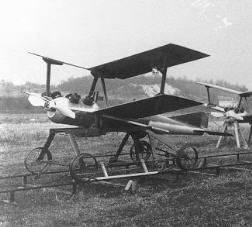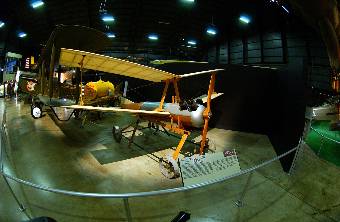A couple weeks ago, the Dayton Daily News ran an article about the possibility of research, development, and the manufacture of UAVs – Unmanned Aerial Vehicles – coming to Dayton:
Dayton, home to sensors research, engineering and propulsion expertise and production of small-sized UAVs, wants to become a go-to center for unmanned aircraft technology development and pilot training, creating an environment for new jobs.

Kettering Bugs ready for takeoff
The primary hurdle is FAA regulations that currently block off airspace used by passenger aircraft from being used by UAVs, even though the latter fly at different altitudes. Industry and government people are currently applying for an exception. Hopefully this will happen – not only does the Dayton area desperately need the jobs this effort will bring, but it’s also fitting, for the Dayton area has a long history with UAVs: one of the first (if not the first) was developed here.
Called the Flying Bomb, the Aerial Torpedo, or simply the Kettering Bug, this unmanned aircraft was developed in 1918 by Charles Kettering and Orville Wright. Around fifty were eventually manufactured by the Dayton-Wright Airplane Company, which was contracted by the Army Signal Corps. The craft were launched pointing in the direction of the target, which would have been approx. 50 miles away. An elaborate system of internal pneumatic and electrical controls were designed to cut to the engine after a pre-determined number of propeller revolutions, and the Bug would fall apart, dropping its payload of 180 lbs. of explosives on impact. After many failed tests, a successful run took the Bug to a planned drop (without payload, one would assume!) in nearby Xenia.

This replica of the Kettering Bug is on display at the National Museum of the US Air Force
The Bug was never put into actual use, as armistice was declared before it saw combat, and development halted in the mid-1920’s as the U.S. moved back into peacetime and funding was cut. However, the Kettering Bug was an important development, as the precursor to modern cruise missiles.
The National Museum of the United States Air Force hosts a replica that was built in the early 60s, as part of their Early Years Gallery.
Is your hometown home to technological developments most people don’t know about? Please share!


